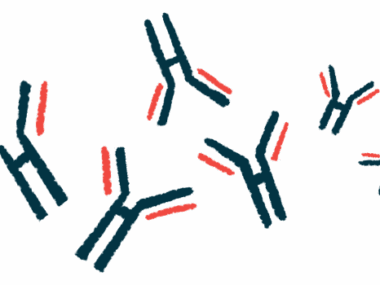Constipation and Pain May Be Linked in NMOSD, MOGAD
Written by |

Constipation may be linked with pain due to nerve cell damage in people diagnosed with neuromyelitis optica spectrum disorder (NMOSD) and the related disorder myelin oligodendrocyte glycoprotein antibody disease (MOGAD), a study suggests.
“Both symptoms were significantly more common among patients with a history of myelitis,” the researchers wrote of constipation and neuropathic pain, noting they “have a negative impact on quality-of-life measures.”
“The possible association opens a possibility of a new approach to managing [pain],” the team wrote.
The study, “Is there a link between neuropathic pain and constipation in NMOSD and MOGAD? Results from an online patient survey and possible clinical implications,” was published in the journal Multiple Sclerosis and Related Disorders.
NMOSD and MOGAD are each characterized by wrongful immune system attacks against cells of the central nervous system (CNS), comprised of the brain and spinal cord. In both cases, the optic nerve, which connects the eyes to the brain, is affected.
Pain due to nerve cell damage — called neuropathic pain — is common in both conditions, but current therapies have limited efficacy and are often linked with side effects. Bowel and bladder dysfunction also are common in both conditions.
Now, a team from Massachusetts General Hospital, along with scientists from the Multiple Sclerosis Comprehensive Care Center, in New York, assessed the potential link between constipation and neuropathic pain in these autoimmune disorders.
An anonymous questionnaire was distributed among patients with NMOSD or MOGAD who were members of two international Facebook groups: “MOG Project” and the “Neuroimmunology Clinic.”
In total, 317 patients, the majority of whom identified their race as white (77.9%), completed the questionnaire. The respondents had a median age of 44 and 81.7% were women. Two-thirds (66.2%) lived in the U.S.
All were asked about the presence and severity of neuropathic pain and constipation, and if they believed there was a potential connection between both symptoms.
Notably, neuropathic pain was defined as “pain sensation associated with one or more of the following characteristics: sharp, hot/cold, itchy, intense, dull, and sensitive.”
Most NMOSD patients (67.2%) were positive for antibodies against the water channel protein aquaporin-4 (AQP4), a disease hallmark. A total of 29.4% had MOGAD — in which autoantibodies target a protein called myelin oligodendrocyte glycoprotein.
A small percentage (3.4%) were diagnosed with NMOSD but lacked both anti-AQP4 and anti-MOG antibodies. These patients were called double-seronegative.
Among the participants, 270 (85.2%) were treated with disease-modifying immunotherapies, most frequently rituximab (sold as Rituxan and others).
Altogether, 65% (206) of the patients reported neuropathic pain and 52.7% (167) were affirmative for constipation. Of those with neuropathic pain, 133 (64.6%) were taking at least one medication. The same was reported by 67 patients (40.2%) with constipation.
A total of 137 participants reported having both neuropathic pain and constipation. Both symptoms were reported significantly more frequently by patients with a history of myelitis, an inflammation of the spinal cord.
More than a third — 34.3% or 47 patients — of those with neuropathic pain and constipation believed the two conditions were associated. According to them, neuropathic pain’s severity increased when that of constipation also increased. Conversely, lessening constipation alleviated neuropathic pain.
Overall, these findings support a link between neuropathic pain and constipation, the researchers said, noting future research is needed to find new ways to manage neuropathic pain.
Such pain, they wrote, “tends to be poorly responsive to symptomatic therapies and is associated with worse quality of life in NMOSD and MOGAD.”
“The novel observation of a possible link between constipation and NP [neuropathic pain] may open avenues for managing NP in NMOSD, MOGAD and other neurologic disorders. The currently available treatments for NP were seen as less than fully satisfactory, as evidenced by the fact that less than 50% of the patients in our survey felt they have good pain control with the current medications,” the team concluded.






